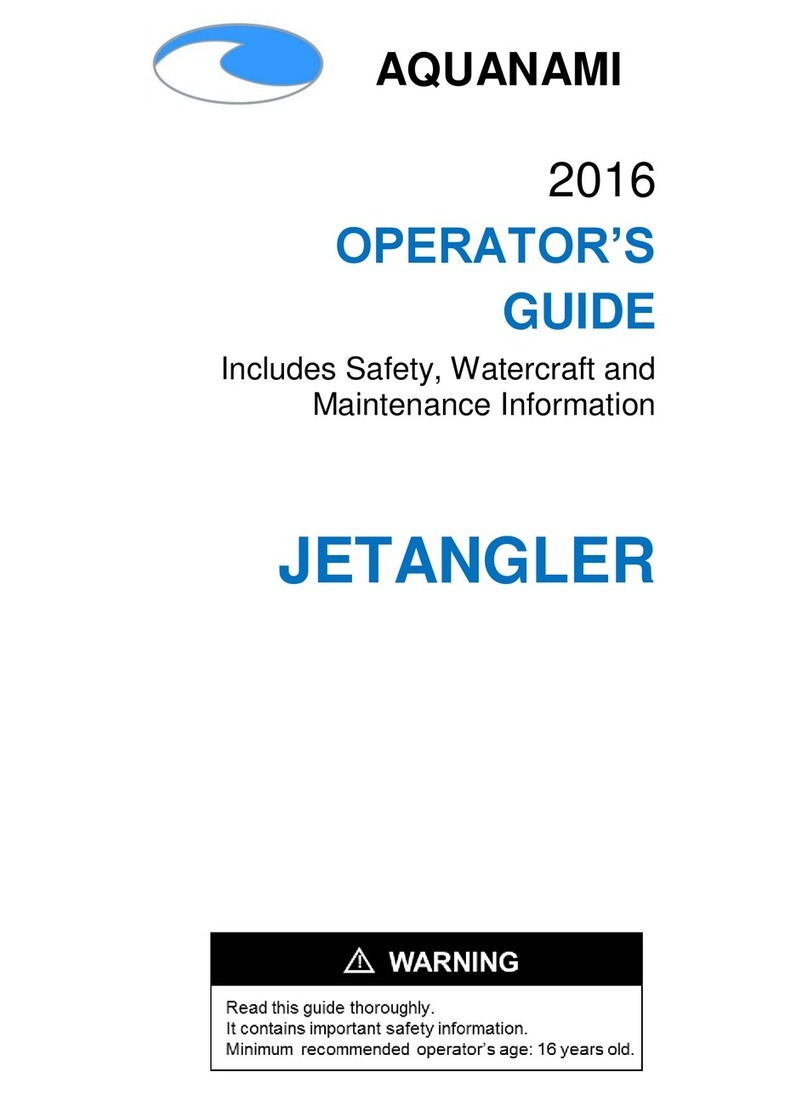8
TO OWNER/OPERATOR
Congratulations on your choice to purchase a Aquanami Powerboard. You have
hours of fun and excitement to look forward to as its new owner. Be sure every operator
of your Powerboard fully understands its various functions, controls, maintenance and
safe riding instructions, and the importance of courteous, responsible riding. Each
operator has a responsibility to ensure the safety of other water users.
The information and descriptions about the Powerboard, its parts and its related
products contained in this User’s Manual are correct at the time of writing. However
Aquanami maintains a policy of continuous improvement of its products without
imposing upon itself any obligation to install them on products previously
manufactured. Aquanami reserves the right at any time to discontinue or change
designs, specifications and models without incurring obligation. The illustrations in this
document show the typical construction of the different assemblies and may not
represent the full detail or exact shape of the parts. However, they represent parts that
have the same or similar function.




























